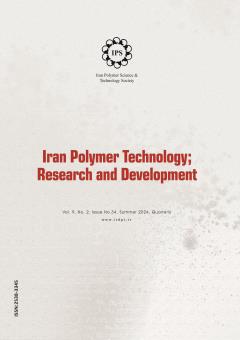Polymers and Solvents Used in Membrane Fabrication: A Review Focusing on Sustainable Membrane Development
Subject Areas : پليمرها و نانوفناوری
1 -
Keywords: Polymeric membranes, Bio-derived solvent, Non-solvent induced phase separation, Membrane fabrication, Scale-up,
Abstract :
Membrane technology has been used for a decade in liquid and gas separation due to its relative ease in manufacturing and operation, high selectivity rate and lack of adsorbent regeneration. Membranes can be classified based on the synthesis material and are divided into organic (polymeric) and inorganic membranes. Different methods have been applied to fabricate polymeric membranes with nonsolvent induced phase separation (NIPS) being one of the most widely used. In NIPS, a solvent or solvent blend is required to dissolve a polymer or polymer blend. N-methyl-2-pyrrolidone (NMP), dimethylacetamide (DMAc), dimethylformamide (DMF), and other petroleum-derived solvents are commonly used to dissolve some petroleum-based polymers. However, these components may have negative impacts on the environment and human health. Therefore, using greener and less toxic components is of great interest for increasing membrane fabrication sustainability. The chemical structure of membranes is not affected by the use of different solvents, polymers, or by the differences in fabrication scale. On the other hand, membrane pore structures and surface roughness can change due to differences in diffusion rates associated with different solvents/co-solvents diffusing into the non-solvent and with differences in evaporation time. (2) Therefore, in this review, solvents and polymers involved in the manufacturing process of membranes are proposed to be replaced by greener/less toxic alternatives. The methods and feasibility of scaling up green polymeric membrane manufacturing are also examined.
